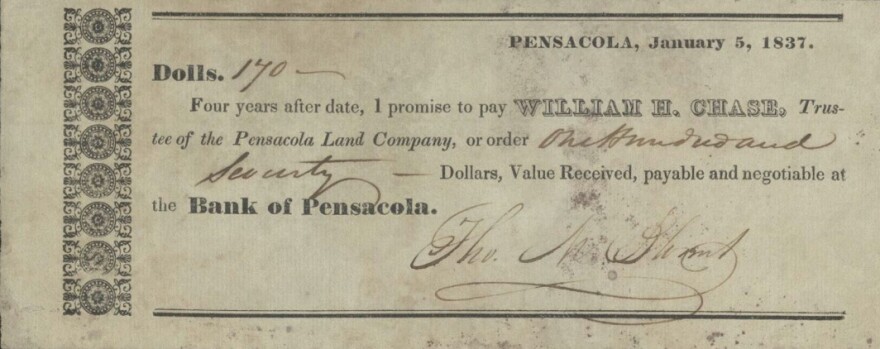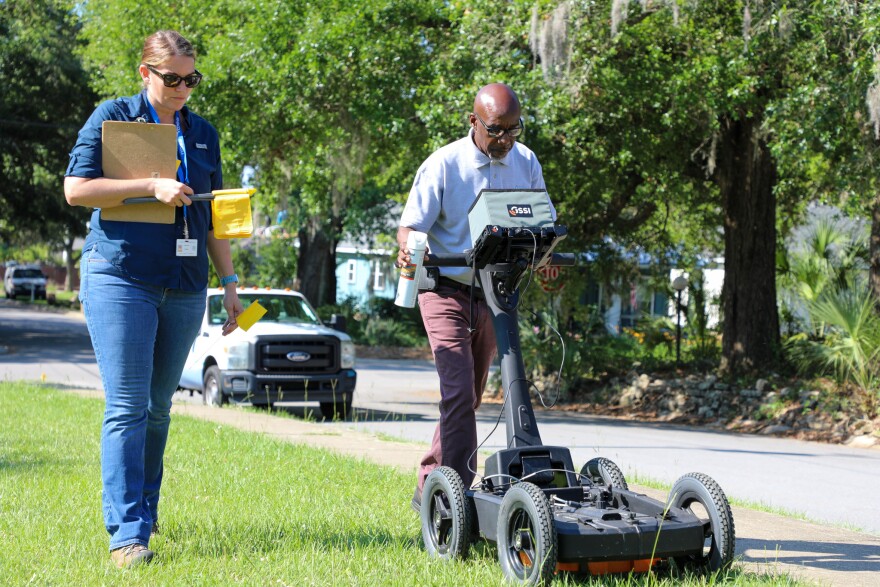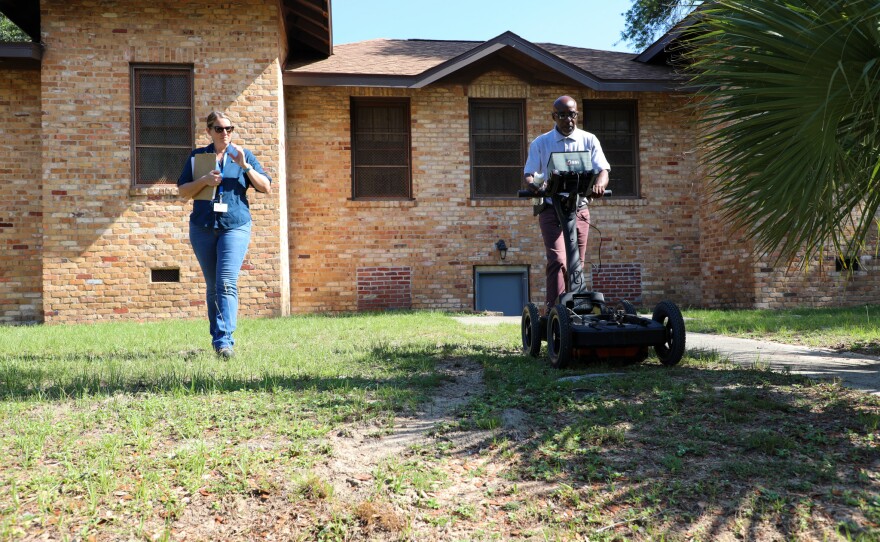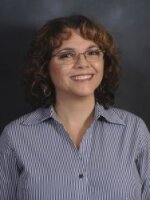A small team from the City of Pensacola got a first look at the ground underneath Miraflores Park, earlier this week.
The Ground Penetrating Radar (GPR) survey produced no significant findings. But, it will help determine what’s next in the comprehensive effort to uncover more details about the history of the site and its possible use as a burial ground in the late 1800s.
Support Local Stories. Donate Here.
“Today we're out at Miraflores Park with the city, as well as Pensacola Energy, which is a part of the city. We're here doing some preliminary ground penetrating radar data collection,” said Adrianne Walker, Cultural Resources Coordinator for the City of Pensacola, as she oversaw the initial ground penetrating radar scan at the site on Monday.
“We're doing this in an effort to make well informed decisions about the Miraflores Burial Ground Study, before we embark on a full scale GPR survey that is very labor intensive and costly,” she said. “We wanted to use this opportunity to kind of see what we see out here today. This is all very preliminary just to get a better idea of what we're dealing with.”
Walker estimates that a controlled, gridded GPR survey could cost between $10,000 and $25,000.
Deciding on the scope and funding is one major aspect of the work of the Community Advisory Group for the Miraflores Burial Ground Study.
Digging into the historical archives and gathering local stories are also essential to the work of panel members, who were appointed to follow up on the 2021 discovery of two human remains in the crawl space of the old Boy Scouts building at the site.
During the group’s second meeting last Friday, Walker reported a slowdown in citizen input, since collection efforts began in March.
Following up on the existence of churches — and possible church burial grounds — in the area, their records search has been widening.
"We did find a record where Havana Square was legally dedicated to the city, and this is in 1887. And it says, 'and should be protected from encroachment.' So, I think this is in direct response to this burial ground being used at Havana Square.
Also, the hunt is on for another record from that same time period that it is known to have once existed.
“In 1887, when the city surveyor did that big full-blown survey of the city in which he first brought it to light that a part of Havana Square was being used as a burial ground, apparently, he was ordered to make 1,000 copies of that report,” said Walker. “I’m really hopeful, that maybe just one of those thousand survives.”
Jennifer Melcher, a UWF faculty research associate with the University of West Florida Archaeology Institute, also has been examining existing maps and records, which point to existence of a small, diverse residential cluster in the area in the late 1800s.
“In going through those, I was able to identify 18 people of color, 11 people who were more than likely White, and 13 people who I just haven’t been able to find in the documentary record to identify how they might fit into this,” said Melcher. “It’s a very mixed community in this area around Miraflores, and I think it's one thing we have to keep in mind.”
Melcher presented a lengthy review of the early land ownership history of the property. Records date back to Pensacola’s Second Spanish Period in early 1800s and continue through the “land rush” of the American Territorial Period, the Civil War, and the reconstruction years that followed.
What she found was a complicated web of ownership that included prominent Pensacola residents Francisco Moreno, attorneys William Blount and C.C. Yonge, and William Chase, trustee of the old Pensacola Land Company.

What could be significant is Melcher’s discovery of evidence of a hospital established by physician Robert Hargis.
“So Hargis first opens the hospital there about 1854. We know it operates up until the Civil War, may have close for a while during the Civil War, and then reopens in 1868 and operates until it’s burned down in 1884,” she began. “And, one thing we know from working on other hospitals and infirmaries is they typical do end up having some burials with them.”
Members of the advisory group are now turning to what’s next, including potential partnerships with UWF for more research, graduate students to conduct the research, and grants to fund it.
“The state grants are great, but it takes a long time to get it,” stated archaeologist Margo Stringfield. “But, this might be an excellent project for an Impact 100 request, because this could be a really nice project that would meet their funding criteria.”
Any monies received could also fund a more extensive GPR survey of the land beneath Miraflores Park, following up on Monday’s preliminary scan.
“From what we can tell, we didn’t see any anomalies at all; we definitely identified a gas line,” said Walker, updating their initial findings during Mayor D.C. Reeves weekly press conference on Tuesday.
Walker said she wasn't surprised by the lack of tangible evidence, given the potential age of the burials and the lower socio-economic status of the people, who might now have had access to normal burial practices such as the use of wooden coffins.
“They might have been in just a shroud burial, which is just a cloth wrapped around. And that decays over time. The body decays over time,” she explained. “And trying to see that from 150 years ago is very difficult.”
Walker says they’re still receiving estimates on GPR, but also considering other options such as heat mapping and the use of historic human remains detection dogs.
Additionally, identification of places to look for more historical information include UWF Special Collections, Escambia County Archives, and the State Archives of Florida in Tallahassee.







